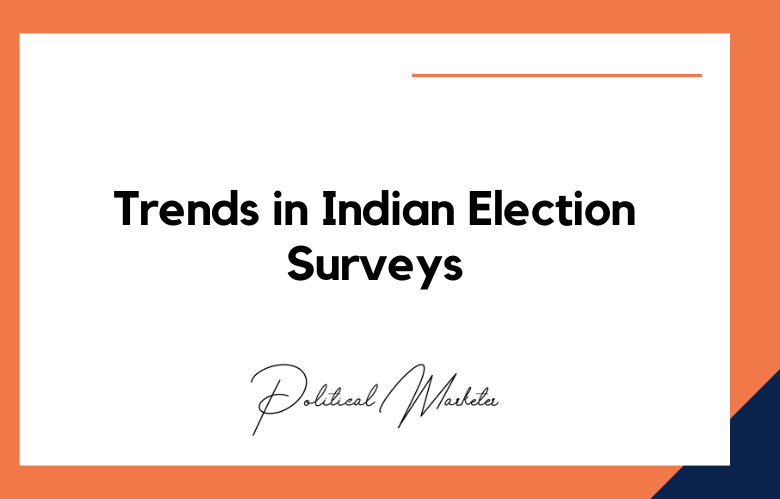Political party campaigns are essential to the democratic process, serving as platforms through which parties articulate their visions, engage with voters, and compete for political power. These campaigns encompass various strategies and tactics to mobilize support, shape public opinion, and secure electoral victories. Here are some key types of political party campaigns:
Types of Political Party Campaigns: How Parties Compete for Power
Electoral Campaigns
Electoral campaigns are central to the democratic process, as parties vie for votes to win elections and secure political office. These campaigns involve various activities, including candidate selection, messaging development, voter outreach, fundraising, advertising, and get-out-the-vote efforts. Electoral campaigns aim to mobilize supporters, persuade undecided voters, and maximize voter turnout on Election Day.
Issue-Based Campaigns
Issue-based campaigns promote specific policy initiatives, causes, or social issues that align with the party’s platform and values.
These campaigns aim to raise awareness, shape public opinion, and mobilize support around crucial policy priorities, such as healthcare reform, environmental protection, or economic revitalization. Issue-based campaigns often involve advocacy efforts, public education initiatives, and grassroots organizing to drive change and influence decision-making.
Negative Campaigns
Negative campaigns involve attacking opponents, criticizing their policies, and highlighting their perceived weaknesses or vulnerabilities.
While controversial, negative campaigning can undermine opponents’ credibility, mobilize supporters, and shift public opinion. Negative campaigns often employ attack ads, smear campaigns, and opposition research to discredit opponents and gain a competitive advantage.
Grassroots Campaigns
Grassroots campaigns focus on mobilizing support at the local level, engaging with communities, and building networks of volunteers and activists to drive electoral success.
These campaigns prioritize door-to-door canvassing, phone banking, and community organizing to establish personal connections, build trust, and mobilize voters within neighborhoods and constituencies. Grassroots campaigns effectively reach undecided voters and energize the party’s base.
Digital Campaigns
Digital campaigns leverage online platforms and social media channels to reach a broader audience, engage with voters, and disseminate campaign messaging. These campaigns employ targeted advertising, social media outreach, email marketing, and viral content to amplify the party’s message, mobilize support, and shape public discourse. Digital campaigns are increasingly important in reaching tech-savvy voters and younger demographics.
National Vs. Local Campaigns
Political parties may run national campaigns to promote their overarching vision and platform at the federal level while also conducting localized campaigns tailored to the unique dynamics and issues of specific regions, constituencies, or electoral districts.
National campaigns focus on broad themes and policy priorities, while local campaigns address localized concerns and leverage community connections to win support.
Get-out-the-vote (GOTV) Campaigns
GOTV campaigns aim to increase voter turnout and ensure that supporters cast their ballots on Election Day. These campaigns involve identifying supporters, providing voter information, offering transportation to polling stations, and implementing strategies to overcome barriers to voting. GOTV efforts translate support into electoral victories and maximize party success.
By combining these campaign types, political parties seek to mobilize support effectively, shape public opinion, and secure electoral victories. The success of a party’s campaign depends on its ability to craft persuasive messaging, engage with voters, and adapt to changing political landscapes and voter preferences.
The Battle for Votes: Understanding Different Political Party Campaign Strategies
Political parties employ a variety of strategies to win elections and gain power. These strategies can vary depending on factors such as the political environment, the strength of the opposition, and the resources available to the party. Here are some of the most common political party campaign strategies:
Ground Game
Ground game refers to the grassroots organizing and mobilization efforts that political parties undertake to get out the vote. This can include door-to-door canvassing, phone banking, and targeted messaging to specific voter groups. A strong ground game is often critical to winning elections, especially in tight races where every vote counts.
Air War
Air war refers to using mass media, such as television and radio advertising, to reach a broad audience with the party’s message. This strategy is often used in national or statewide races where the electorate is too large for door-to-door outreach.
Digital Campaigning
Digital campaigning involves using social media, email, and other digital platforms to engage voters, raise funds, and mobilize support. This strategy has become increasingly important in recent years as more and more people get their news and information online.
Unleashing the Political Power: Exploring Various Party Campaign Tactics
“Unleashing the Political Power: Exploring Various Party Campaign Tactics” delves into the diverse array of strategies and tactics employed by political parties to wield influence, mobilize support, and secure electoral victories. In this exploration, we delve into the arsenal of campaign tactics parties utilize to navigate the complexities of electoral competition and shape political outcomes.
Door-to-Door Canvassing
Door-to-door canvassing remains a cornerstone of political campaigning, allowing parties to engage directly with voters in their communities. Campaign volunteers visit households, engage in one-on-one conversations, distribute campaign literature, and solicit support for their party’s candidates and policies. Door-to-door canvassing facilitates personal connections, builds trust, and mobilizes support at the grassroots level.
Mass Media Advertising
Mass media advertising encompasses a range of tactics, including television commercials, radio spots, print advertisements, and online ads, designed to reach a broad audience and disseminate campaign messaging. Parties invest in advertising campaigns to raise awareness, shape public perceptions, and promote their candidates and policy positions through strategic messaging and imagery.
Digital and Social Media Engagement
In the digital age, political parties harness the power of social media platforms, websites, and digital advertising to reach voters, engage supporters, and amplify their message. Digital campaign tactics include social media outreach, targeted advertising, email marketing, and viral content creation, enabling parties to connect with diverse demographics, mobilize online communities, and drive conversations.
Rallies and Public Events
Rallies, town hall meetings, and public events are opportunities for parties to rally supporters, showcase their candidates, and generate media coverage. These events energize the party’s base, foster community, and provide platforms for party leaders and candidates to deliver speeches, engage with voters, and galvanize enthusiasm for the party’s agenda.
Debates and Forums
Debates and forums offer platforms for candidates to articulate their positions, engage in dialogue with opponents, and demonstrate their readiness for office. Political parties leverage debates and forums to showcase their candidates’ knowledge, leadership qualities, and policy expertise while contrasting their vision with their opponents.
From Grassroots to Glamour: A Look at Diverse Political Party Campaign Styles
“From Grassroots to Glamour: A Look at Diverse Political Party Campaign Styles” offers a comprehensive exploration into the broad spectrum of campaign styles and strategies political parties adopt for electoral success. This examination delves into the contrasting approaches parties employ to engage voters, shape public opinion, and secure electoral victories, from grassroots organizing to high-profile events.
The diversity of campaign styles reflects the dynamic nature of modern politics, where parties must navigate various communication channels, voter demographics, and competitive landscapes. From humble beginnings rooted in community activism to high-stakes spectacles that capture national attention, political party campaigns encompass a rich tapestry of tactics and techniques.
At one end of the spectrum, grassroots campaigns emphasize localized engagement, community outreach, and personal connections with voters. These campaigns prioritize door-to-door canvassing, neighborhood meetings, and volunteer-driven initiatives, leveraging the power of face-to-face interactions to mobilize support and build momentum from the ground up.
The Art of Persuasion: Different Approaches to Political Party Campaigning
Political parties use a variety of strategies to persuade voters and win elections. These approaches can range from negative attack ads to positive messages of hope and change. Here are some of the most common approaches to political party campaigning:
Negative Campaigning
Negative campaigning involves attacking an opponent’s character, record, or policy positions. This approach can effectively damage an opponent’s credibility and energize a party’s base, but it can also turn off voters looking for positive messages and solutions.
Positive Campaigning
Positive campaigning involves promoting a party’s candidate, policies, and vision for the future. This approach focuses on building a positive image and connecting with voters emotionally. While it can be effective in building support, it may not be as effective in differentiating a party from its opponents.
Comparative Campaigning
Comparative campaigning involves comparing a party’s candidate or policies with its opponents. This approach can effectively highlight a party’s strengths and opponents’ weaknesses, but it can also lead to a more negative tone in the campaign.
Emotional Appeal
Emotional appeal involves messaging and imagery that connects with voters emotionally, such as appeals to hope, fear, or patriotism. This approach can effectively motivate voters and build a connection with the party.
Conclusion
The various types of political party campaigns reflect the dynamic and multifaceted nature of electoral competition and the strategies employed by parties to vie for power and influence. From grassroots mobilization efforts and traditional canvassing to sophisticated digital marketing campaigns and issue-based advocacy, political parties use various tactics to connect with voters, shape public opinion, and secure electoral victories.
The types of political party campaigns reflect the dynamic and evolving nature of electoral competition in democratic societies. By embracing diverse strategies, engaging with voters personally, and upholding principles of accountability and transparency, parties can compete effectively for power while strengthening democratic institutions and promoting civic participation. Ultimately, political party campaigns serve as a vital mechanism for shaping public opinion, mobilizing support, and advancing the interests of citizens within the political process.
Call: +91 9848321284
Email: [email protected]
Frequently Asked Questions (FAQs)
What is a political party campaign?
A political party campaign is a structured effort by a political party to promote its candidates, policies, and ideology to win elections and influence public opinion.
What are the main types of political party campaigns?
They include electoral campaigns, issue-based campaigns, referendum campaigns, negative campaigns, grassroots campaigns, and digital campaigns.
What is an electoral campaign?
It’s a campaign conducted by a political party or candidate with the primary goal of winning a specific election—local, state, or national.
What is an issue-based campaign?
This type focuses on a single topic—such as education, healthcare, or climate change—to raise awareness and influence policy or public opinion.
How does a grassroots campaign work?
Grassroots campaigns mobilize volunteers and local communities for door-to-door outreach, rallies, and direct engagement, emphasizing people-powered change.
What is a negative campaign?
A negative campaign focuses on criticizing opponents—highlighting their weaknesses, failures, or scandals to undermine their credibility.
What is a digital or online campaign?
Digital campaigns leverage social media, websites, email marketing, and online ads to reach voters cost-effectively and at scale.
What is a door-to-door campaign?
A traditional, high-impact method where volunteers or party workers personally visit households to promote candidates or collect voter feedback.
What is a mass media campaign?
This campaign utilizes TV, radio, newspapers, and billboards to broadcast messages to a wide audience with high visibility and reach.
What is a targeted campaign?
It uses data analytics to reach specific voter groups based on demographics, behavior, or geography for tailored messaging and higher conversion.
What is a celebrity-driven campaign?
Parties use popular personalities to endorse candidates or issues, leveraging their fan base and media influence to boost credibility and visibility.
What is a rally-based campaign?
These involve large gatherings, speeches, and public demonstrations to energize supporters, attract media attention, and showcase strength.
What is a whisper campaign in politics?
It’s a covert campaign that spreads rumors or subtle misinformation to damage opponents without direct attribution.
What are social media influencer campaigns?
These involve collaboration with influencers to reach younger demographics, making politics more relatable and viral on platforms like Instagram or TikTok.
What is a campaign blitz?
A high-intensity campaign activity conducted in the final days before an election to maximize last-minute voter influence and turnout.
What is a canvassing campaign?
A structured form of outreach where party volunteers collect data, persuade voters, and mobilize turnout through direct interaction.
What are mobile van or roadshow campaigns?
These involve branded vehicles or convoys traveling through constituencies, delivering speeches, promotional content, and attracting crowds.
What is a crisis-response campaign?
Launched to defend a candidate or party’s image during a controversy or scandal—focused on damage control and narrative redirection.
What is a slogan-based campaign?
A campaign built around a powerful, memorable slogan to encapsulate the party’s vision, promise, or emotion (e.g., “Yes We Can”).
How do hybrid campaigns work?
They combine traditional outreach (rallies, print) with modern tools (social media, data analytics) for an integrated, multi-channel strategy.










